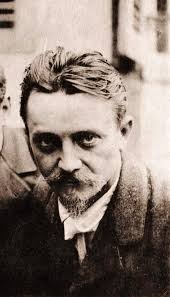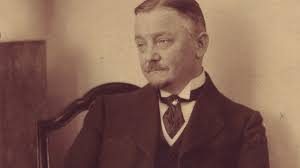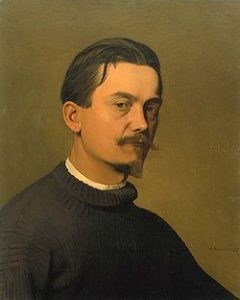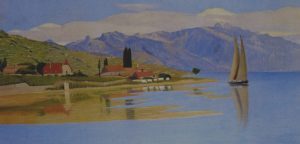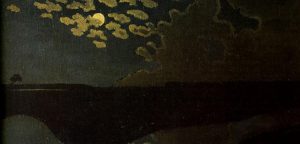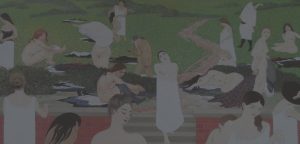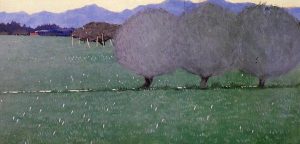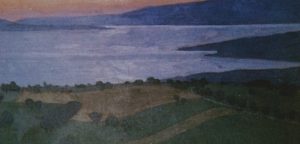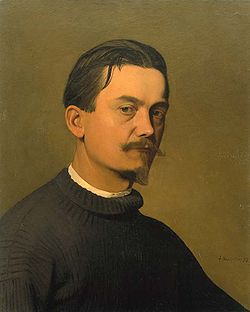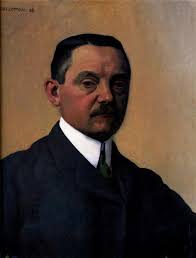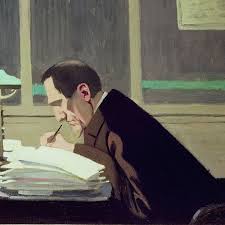He was born on the 28th of December in 1865 in Lausanne, Switzerland.
1865 - 1925
Félix Vallotton
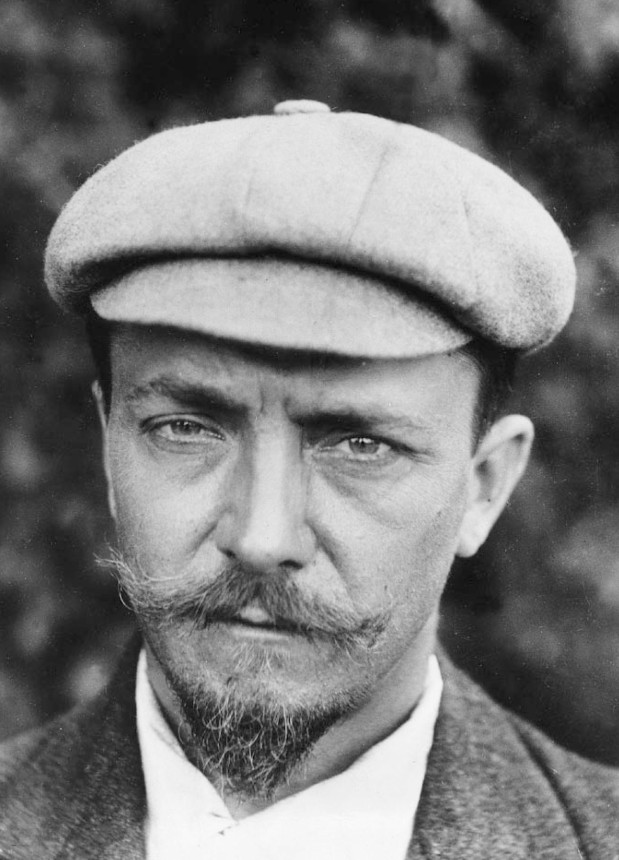
description
Felix Edouard Vallotton was a Swiss and French artist and graphic artist, illustrator and master of engraving, who joined the Nabis group (translated from the Hebrew “Prophets”) when the groups work was in full bloom.
He was born in Swiss Lausanne into the family of notary Protestant Arman Adrien Vallotton and Louise Roseng, the daughter of a baker.
Wood engravings (woodcut) in the masterful performance of Vallotton were very widely known. A diversely gifted artist worked in the genres of landscape and still life, interior and portrait, created a series of “nu”, close in style to Art Nouveau, and also wrote several novels and plays.
In 1927, in the homeland of the artist (during his lifetime, he was not much appreciated there), large commemorative exhibitions were held (Lausanne, Bern), and, in the exposition of 1938 in Zurich, the organizers presented almost 350 works by an outstanding master.
Key Ideas:
– Felix Vallotton tried to capture the spirit of his time on the canvases. He is attracted by people, the crowd in motion, scenes that can be seen on the street or in the park. The motive of the crowd was the strongest impression for the artist who came from the Swiss province.
– Deformed and blurred features of characters’ faces, scale planes of pure local color, schematic figures and objects – those are the features that were the image principle for all Nabis artists and embodied in the works of Vallotton.
– Just like his fellow artists, Vallotton uses a special arrangement of the canvas space – a view from above or, on the contrary, a view from below, sometimes connecting different points of observation in one composition. At the same time, the space is not considered an objectively existing reality with certain principles of geometry, but is subordinated to the imagination of the artist. The perspective is also transformed – it is agile and changeable.
– F. Vallotton’s attention is drawn to various aspects of urban life, both extraordinary and quite ordinary. The multi-figure compositions of the master are squeezed into vertically elongated rectangles. At the same time, straight lines limiting the composition sometimes quite mercilessly “cut” details and characters, as if leaving a part of objects and figures behind the scenes.
1865
1882
1885
1888 - 1890
1891
1892 - 1893
1894
1899
1903
1913
1915 - 1918
1925
The birth of the artist
Studied at the private school-workshop of the Academy of Julian
The father of Felix, noticing his son’s penchant for drawing, took him to Paris, where the young man studied at the private school-workshop of the Academy of Julian.
“An old man”
At the annual Salon, the picture “An old man” was first presented (located in the museum of Zurich, Switzerland).
Made a trip to Austria and Italy
Having made a trip with his cousin to Austria and Italy, he returned to his father’s house; painted a lot of landscapes, mastering the technique of watercolor.
Returned to Paris
Returned to Paris and became a member of the group “Nabis”. He showed interest in Post-impressionism in connection with the impression from the exhibition, where the paintings of Toulouse-Lautrec, Van Gogh, and Rousseau that were not accepted by the official Salon were presented. He wrote about this in an article for Gazette de Lausanne, to which he then sent correspondence for several years.
He tried his hand in woodcutting
He tried his hand in woodcutting, creating a series of 10 small engravings “Bathers”. Jolie publishing house published an album of lithographed portraits “Immortals of the Present, Past and Future”, which included Louis Pasteur and Alphonse Dode, Alexander Dumas and Alexander Herzen, Fyodor Dostoyevsky and other celebrities. The second album of the series was released in 1903.
"True Paris"
The album “True Paris” (engraving on zinc) was published.
Married the daughter of the merchant of paintings of Bernheim, widow Gabrielle Rodriguez Henriks
Married the daughter of the merchant of paintings of Bernheim, widow Gabrielle Rodriguez Henriks. A year later, he got French citizenship.
In the gallery of Bernheim, 75 works by F. Vallotton were presented
In the gallery of Bernheim, 75 works by F. Vallotton were presented.
Worked in Russia
Worked in Russia: a wealthy merchant from St. Petersburg ordered a portrait of his wife.
"Such is the war"
Taking the world war too personally, worked on woodcuts “Such is the war”, visited the front, painted military landscapes, portraits of soldiers and commanders. After the war, he was more engaged in painting, illustrated the books of Flaubert.
The death
He passed away on the 29th of December in 1925 in Paris.
Félix Vallotton
On Artist
flow
Impressionism
Post-Impressionism
friends
Edouard Vuillard
Henri de Toulouse-Lautrec
Odilon Redon
Pierre Bonnard
Maurice Denis
artists
Gustave Courbet
Edouard Manet
Charles Morin
Jules Lefevre
Gustave Boulanger
Ambrosius Holbein
Jean-Auguste Dominique Ingres
Albrecht Durer
Rembrandt
Jean-Francois Millet
By Artist
flow
Cubism
Surrealism
Futurism
artists
Henri Matisse
Wassily Kandinsky
Pablo Picasso
Pete Mondrian

